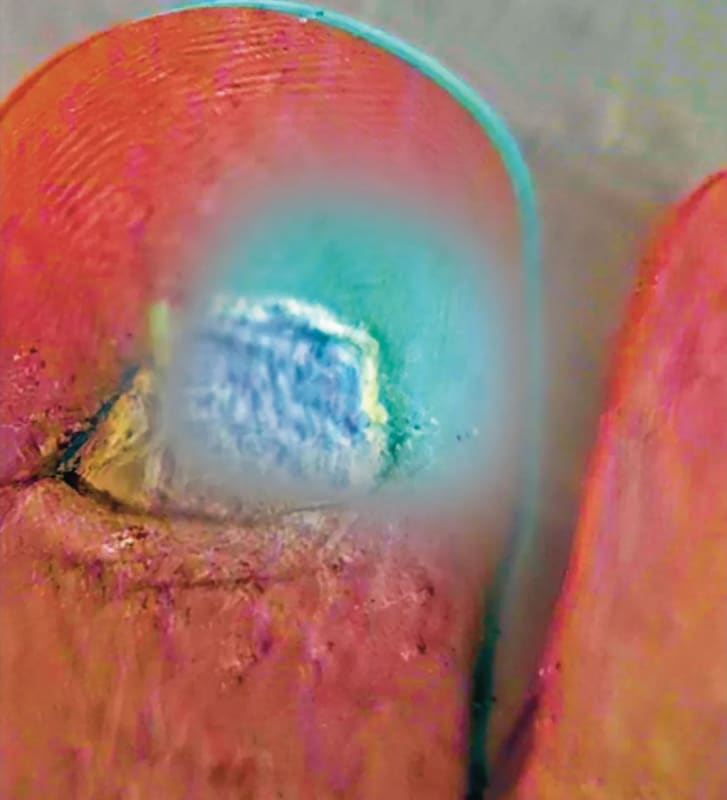ON A STREET CORNER in London one evening a few months back, Marcin Dudek borrowed a lighter and dedicated his monograph Slash & Burn by setting the edge of the book on fire. This surprising, ruinous signature suited the artist’s work, which draws on his personal history as a soccer hooligan. Born in Poland in 1979, Dudek spent his teenage years following his local club, MKS Cracovia. His installations, performances, paintings, and mixed-media works use sports fandom as a framework through which to investigate the intersections of masculinity, violence, community, and subcultural aesthetics. He uses rough-hewn or industrial materials like metal chains, nylon, and cement; still, there is a tenderness to his portrayal of the lives of his subjects.
A concurrent exhibition, “The Group” at Extra City in Antwerp, took its title from a 2021 installation that cobbled together a makeshift tent from burned, torn hoodies and bomber jackets worn by hooligans. Suspended from the ceiling by chains were male torsos sculpted in papier-mâché made from pulped soccer magazines and the Bible, among other sources (Corps de Ballet, 2023). Studies have shown that during a soccer match fans secrete nearly as much testosterone as the players themselves. In Fever Pitch, his 1992 memoir about his love of the London team Arsenal, novelist Nick Hornby sums up his impression of the first game he ever attended as a boy: “I remember the overwhelming maleness of it all.” Dudek ties this overwhelming masculinity to intimacy, a closeness between men, a sense of belonging that is expressed physically. The reference to ballet is not contrarian. There’s a beauty to these choreographies of proximity, which Dudek recognizes touch on the homoerotic, without reducing the complex relations he cites to only one form of connection.
And the violence? It can be seductive. Descriptions of violence are full of verbs; its representation involves images of bodies stretched to their full capacity. Dudek’s work combines this sense of looming carnage with references to the history of art (the orange smoke-grenade streak is a reference to the famous blue line in Polish neo-avant-garde artist Edward Krasiński’s studio in Warsaw; the sculpted torsos are reminiscent of antiquity) and to his own history. The work’s emotional charge comes from memory, from what Dudek has described as a sense of unfinished business that lingered with him after he left the group he was part of and went to art school. No longer being part of a group remains with him, like a scar; you don’t need to be a soccer fan to grasp what longing to be part of something is like. “Empathy isn’t just something that happens to us,” writes Leslie Jamison in the title essay of her book The Empathy Exams (2014); “it’s also a choice we make: to pay attention, to extend ourselves.” Even those who know nothing about this subculture of soccer hooliganism can readily understand how deeply this personal body of work is shaped by a sense of loss.

